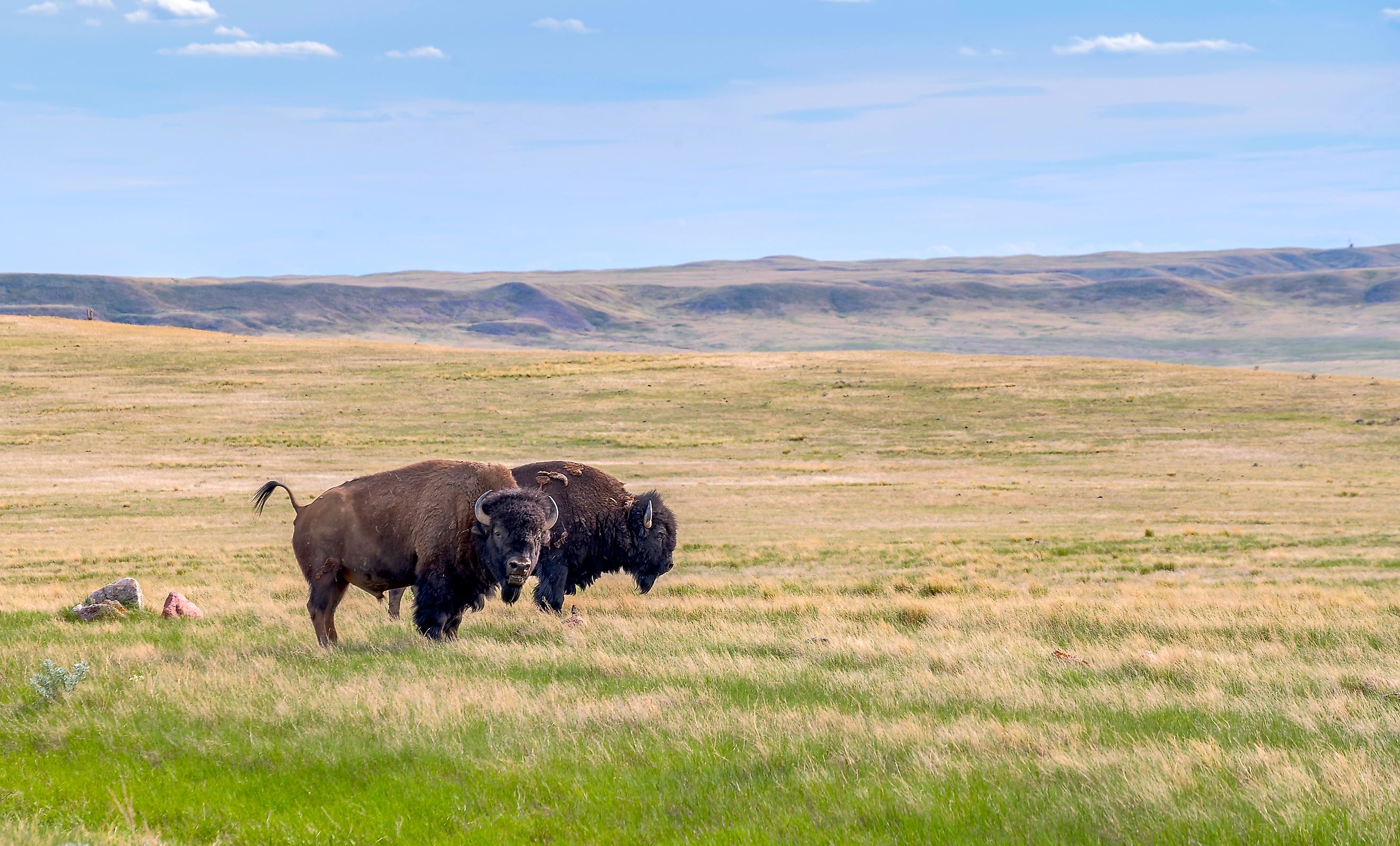
A Journey Through Canada's Underrated Grasslands National Park
Canada's national parks highlight a plethora of enticing landscapes - from the skyscraping Rocky Mountains, to the Arctic's mystique, to the sunken treasures of Georgian Bay. But there's one environment that's easy to overlook: the grasslands. Sure, the very term might sound a bit mundane by comparison, but these rolling, textured, and historic lands are anything but. Saskatchewan's Grasslands National Park is one of the best examples of mixed-grass prairie habitats on a continent that has expelled 70% of them in the name of urban development and agriculture. Thankfully, this remote sanctuary is holding the line. I got to explore the wispy scenery this summer, in between some dinosaur adventures in Alberta, and a circuitous tour of Montana's mountain towns. So take a second and saddle up for a vicarious overview of the seriously-underrated Grasslands National Park.
The Background
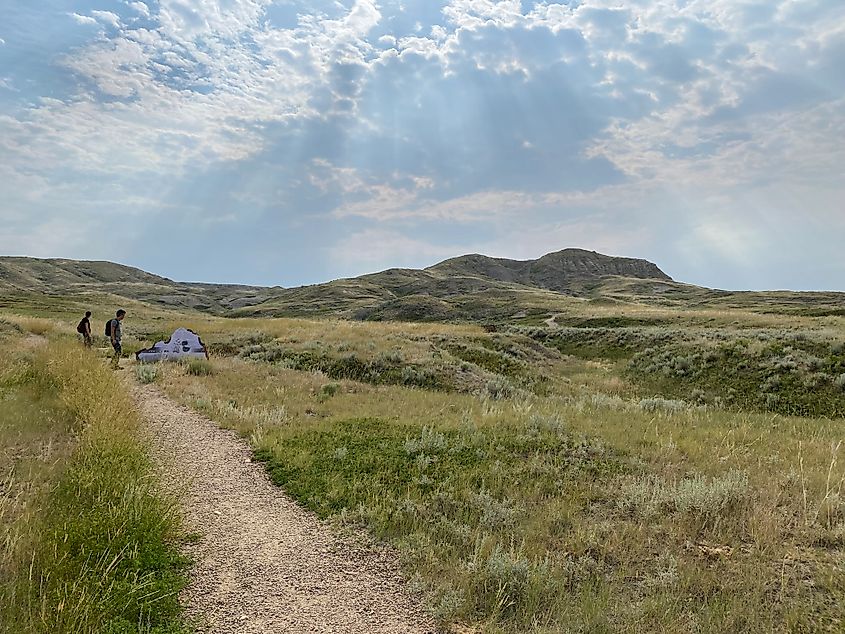
The 907 square-kilometers (350 square-miles) that constitute Grasslands National Park were carved by glacial meltwater, shaped by millions of grazing bison, and steadily tamed by nomadic tribes and early ranchers/homesteaders. The result is an environment that is too dry for forests, but sufficiently-quenching to stave off the desert transition. Today, this standout park harbors 70 species of grasses, but also wetland meadows, shrubs, coulees, and badlands. It is a place that is dotted with 20,000 tipi rings, as well as thousands of other cultural artifacts (i.e. arrowheads, stone tools, and bison drive lanes) - one of the largest concentrations of Indigenous archeology in Canada. And it is a safe haven for 30 At Risk or Threatened species, including the plains bison (reintroduced in 2005-6 after a 120-year absence), the black-tailed prairie dog (their only remaining natural environment), the northern leopard frog, short-horned lizard and the adorable burrowing owl.
Grasslands National Park was established on June 19th, 1981 after a 50-year campaign. A century prior, hardy homesteaders were making a go at independent ranching life in these sparsely-populated lands. Prior to that, European settlers shifted into The Great Plains, finding an estimated 30-million bison roaming wild. They were initially hunted for economic gain, but were soon simply eradicated because of how they inhibited the budding ranching/farming scene. By 1880, it is believed that there were only a few hundred remaining bison.
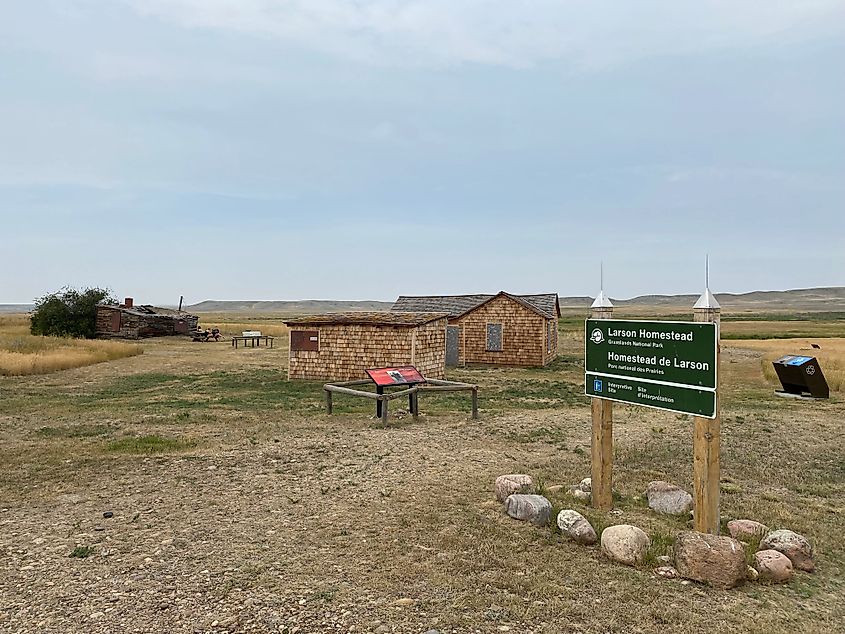
Before the arrival of Europeans, various Indigenous groups moved in and out of Grasslands' modern-day boundary. They followed those same iconic mammals along their migration routes (practicing sustainable hunting), or in the case of the Lakota (Sioux), sought refuge from the American Cavalry following the Battle of Little Big Horn. Ultimately, Grasslands National Park was formed on Treaty 4 Territory, which includes the A'aninin (Gros Ventre), Nakoda (Assiniboine), Nehiyawak (Plains Cree), Niitsitapi (Blackfoot), Dakota and Lakota (Sioux), and Métis peoples in its purview.
Continuing our journey into the past, roughly 12,000 years ago (i.e. at the end of the Ice Age/Pleistocene Epoch), and prior to all known human activity, the melting of the immense Wisconsin Glacier pummeled part of its foundation into the gentle, but far from uniform landscape of today's Frenchman's Valley. And before all of that, some 60 to 80 million years ago, dinosaurs traipsed across the markedly-different terrain - as is evidenced by the wealth of fossils discovered here. In fact, Grasslands National Park, on top of being one of the most fruitful fossil sites in Canada, is one of the few places in the world that reveals the Cretaceous-Paleogene (KPG) Boundary (i.e. the event that separates the reign of dinosaurs from mammals).
The Lay of the Land
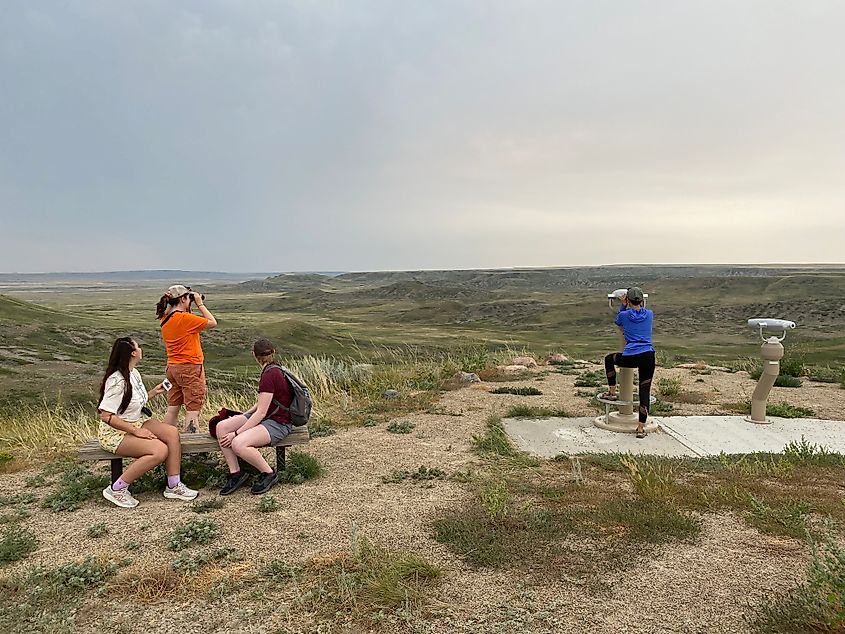
As you can see, this unique Saskatchewan park covers not only a wide swath of earth, but an encyclopedic past. Visitors can tap into all of this history, wildlife, and scenery by delving deep into the interpretive roads and hiking trails, campgrounds, and modest infrastructure manned by Parks Canada. Grasslands National Park is divided into East and West Blocks, which are 186 kilometers (116 miles) apart. Both Blocks are remote in nature; hours removed from the nearest city. Basecamp for the West Block is Val Marie - a village of 120 people and a handful of businesses (including the visitor center), while the leaping off point for the East Block is Wood Mountain, which sits just barely above the "ghost town" cutoff with 20 some-odd residents. So it goes without saying that prospective visitors will want to arrive with a full tank of gas and some basic provisions. Cell reception isn't great either (a blessing or a curse, depending on your perspective).
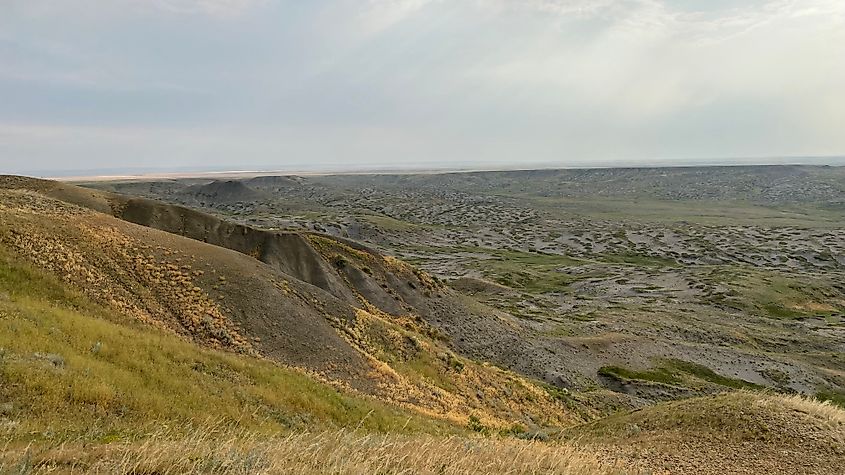
What Grasslands lacks in amenities, it makes up for in solitude (a rarity these days), authenticity, and perspective. Not only do the seemingly infinite prairies and striated badlands make one feel small, but the designation by the Royal Astronomical Society of Canada as a Dark Sky Site adds yet another humbling element to the park's power. Given my modest timeline (and the price of gas…) I biased my efforts to the West Block. And while I do look forward to doubling back on the Valley of 1000 Devils and Badlands Parkway (both premium examples of badlands scenery in the East Block), I was well-satiated by the West Block's 70 Mile Butte Trail, Ecotour Scenic Drive, and Frenchman Valley Campground.
The Journey
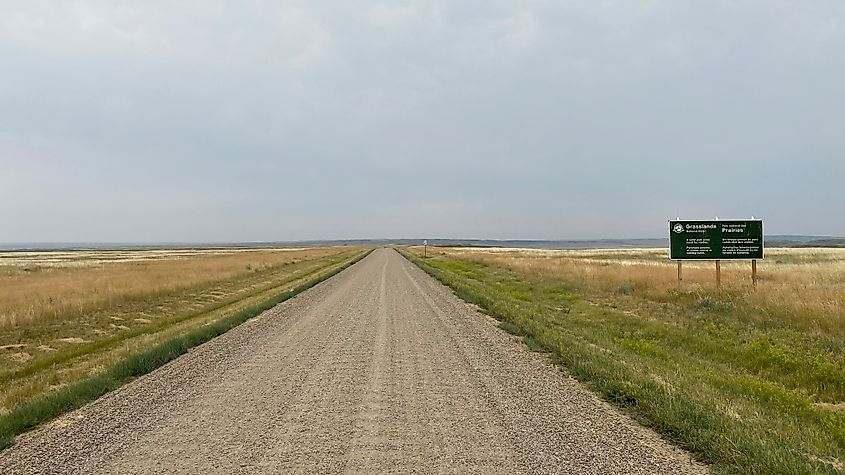
A long day of prairie driving fostered the motivation to sleep in the Val Marie municipal campground that first night and then make for the park the following morning. This strategy paid off as Irina and I got to kick off our Grasslands National Park experience with an absolutely stunning early-morning hike on the 70 Mile Butte Trail, which despite its name, was a perfectly-manageable 5-kilometer (including the Eagle Butte add-on) round-trip. Having to backtrack into Val Marie on our way to the Ecotour Scenic Drive, we decided to get some tips at the Visitor Center, grab a coffee at the antiquitous red-brick schoolhouse (now a museum/cafe), and then take a quick tour of the grain elevator (also now a living museum). There isn't much else to do in Val Marie, but hey, that's part of its charm.
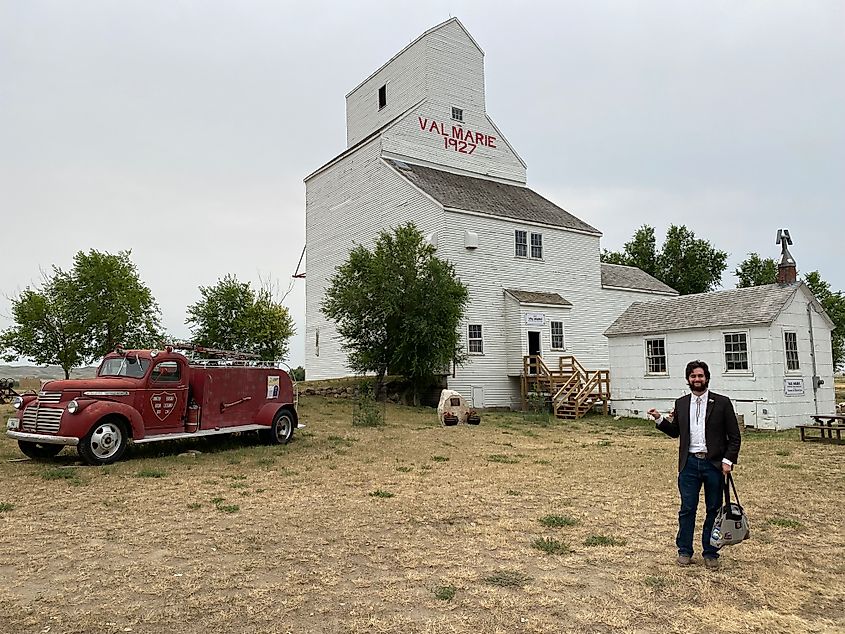
Overcast but otherwise co-operative skies oversaw our self-guided boot down the Ecotour Scenic Drive. This 20-kilometer gravel road passes seven main stops: a mix of hikes/lookouts, cultural sites, and wildlife viewing areas. The key is to take it slow, and keep in mind that the park is dynamic - so feel free to double back at different points throughout the day. Case in point, after several hours of actively seeking the coveted bison herds (there are anywhere from 500-650 roaming the park), a herd of at least 30 crossed the Ecotour Road, right where it transitions into the rugged Back Country Loop (hardy vehicles only). Ten minutes later, they disappeared into the adjacent hills, unbeknownst to the string of motorists that followed in their wake.
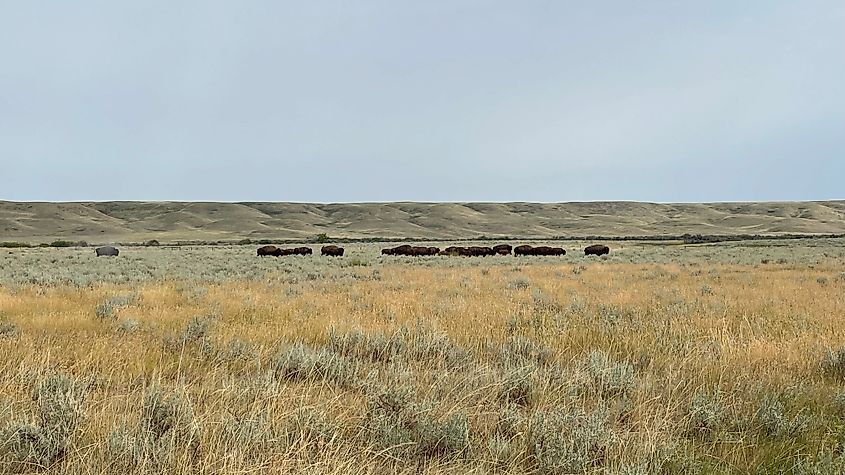
We didn't reserve a campsite in advance, but the beauty of Grasslands is that they are never all that busy (less than 20,000 people visited last year). And even though the 20 formal RV/tent sites at the Frenchman Valley Campground were booked solid that Sunday evening, there is a large spill-over area of unserviced sites that we were able to utilize. Though the unkempt grass did probably exacerbate the fly situation (that's the prairies for you), Irina and I still had access to the pit-toilets, potable water, and a shared shelter area (complete with picnic tables, a wood-burning stove, and vending machines).
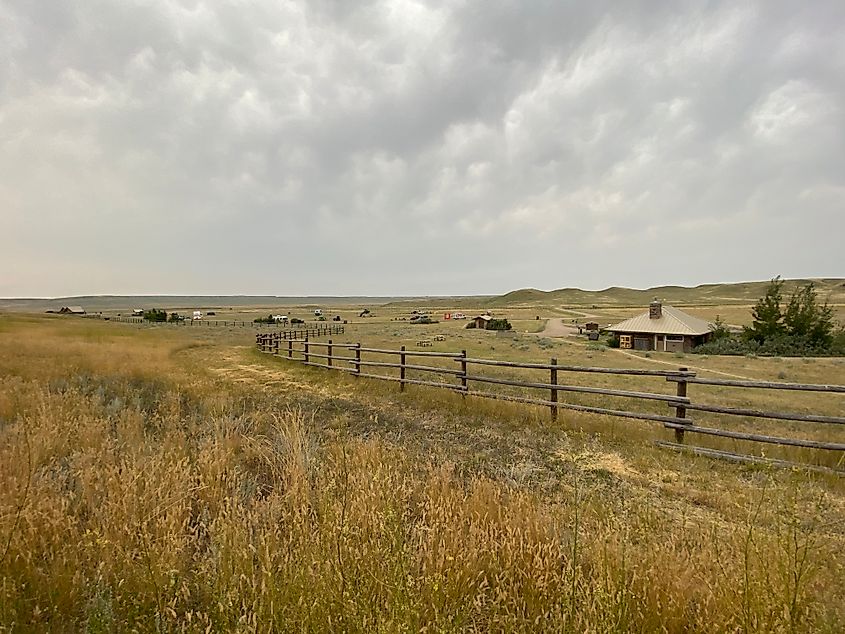
I don't know about you, but after a full day behind the wheel, I crave exercise. So after we established ourselves at the campground I set forth on the 11-kilometer Broken Hills Trail. Given its challenging topography and perpetually grown-in nature (it is, after all, completely surrounded by wild grass) this circuit normally takes four to five hours to complete. Better to not leave it for the end of the day like I did, but I was in the mood for a hard run, and so I was able to zip back home in a little over an hour. However you choose to traverse Broken Hills, prepare to be enamored by complete immersion in the ancient landscape. Save for the roadside trailhead, the entire path provides an uninterrupted view of the ubiquitous and weirdly spiritual terrain - just as it was when hunter-gatherers first tracked those robust bison herds.
The aforementioned clouds did kibosh my stargazing aspirations (something else to look forward to next time), but as a consolation prize, I enjoyed a restful slumber in the deepest silence I think I've ever experienced. Once the bison disbanded (they are sonorous creatures indeed), the rangers retired, and the last of the RV generators shut off, there wasn't a peep for hundreds of miles.
Parting Thoughts
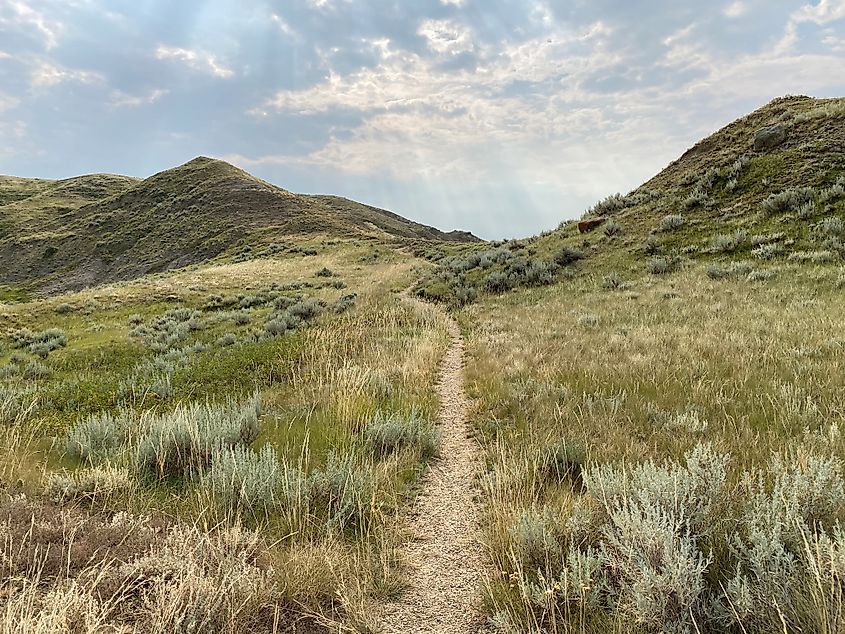
A drizzly morning added a silver-lining aesthetic to our drive back out to civilization. For whether the weather is clear or inclimate, the sky seems to merge with the rolling plains in a way that teases collective infinity. Sound intriguing? Well, seeing as Banff's crowds are as strong as ever, and Jasper will need some time to recover from its tragic wildfires, perhaps Grasslands National Park is ripe for a Canadian tourism boom. Bon Voyage!











